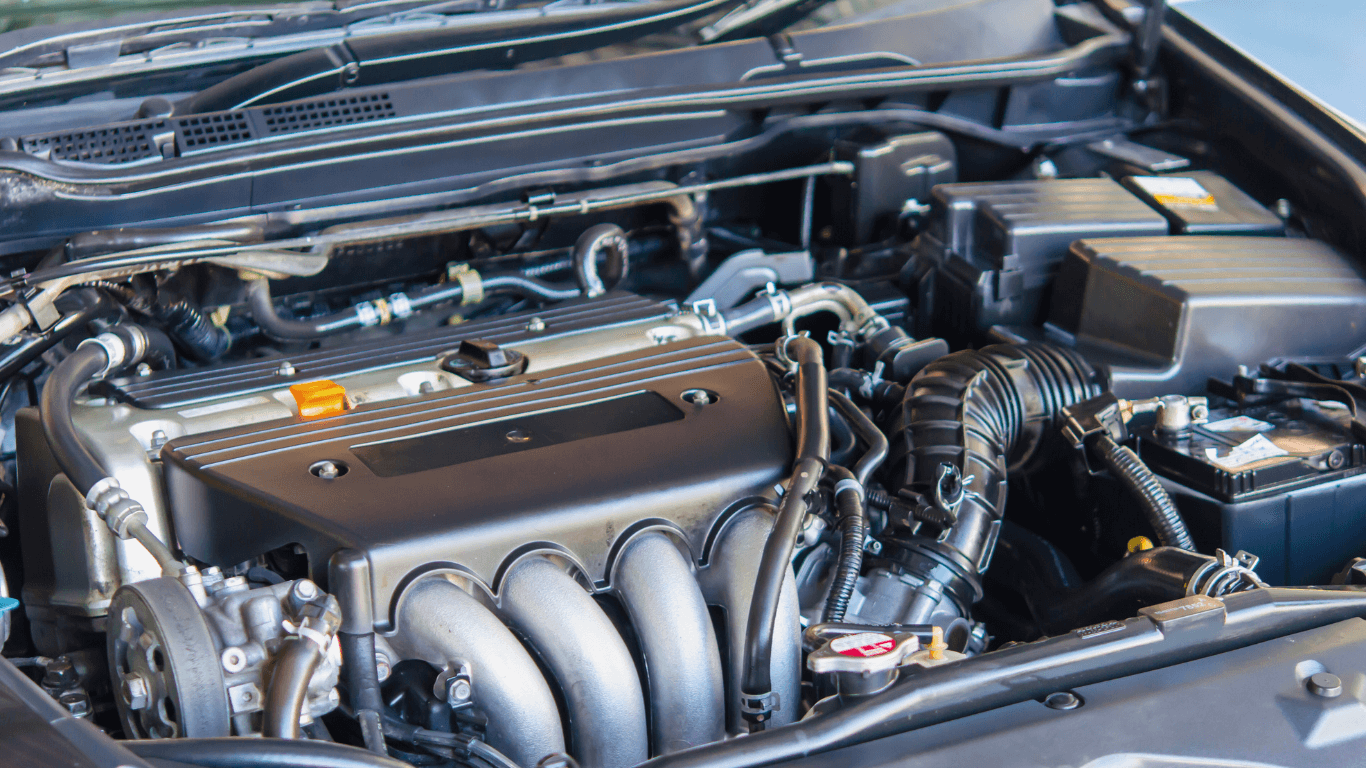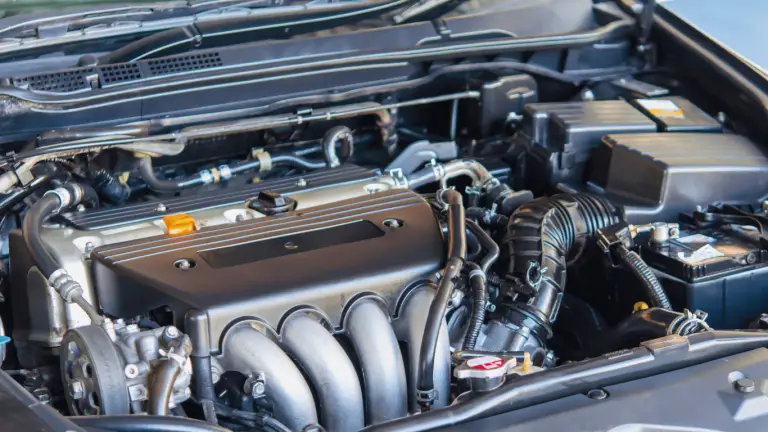Engine Malfunction on BMW: Causes, Symptoms, and Solutions
Have you ever been driving your BMW when suddenly the “engine malfunction” warning light illuminated on your dashboard? This ominous orange glow is enough to strike fear into the heart of any BMW owner. While an engine malfunction can indicate serious issues, the cause may also be something simple and affordable to repair.
This comprehensive guide will explore the most common reasons for BMW engine problems. You’ll learn how to diagnose the issue yourself, evaluate the repair costs, and decide whether DIY repairs are feasible or if it’s better to take your car to a professional BMW mechanic.
So what does the engine malfunction light actually mean, and what causes it to come on in a BMW?
The engine malfunction light, also known as the “check engine” or “service engine soon” light, indicates a problem with your BMW’s Digital Motor Electronics system. This computerized system is responsible for managing ignition timing, fuel delivery, emissions controls, and other essential functions.
When a sensor detects an issue or something performs outside of specifications, an error code is stored and the malfunction light illuminates. The light can signify anything from a loose gas cap to major engine failure. Some causes will only result in a temporary illumination that goes off after a day or so, while others indicate a persistent problem that needs attention.
Driving with the engine malfunction light on for extended periods can cause increased emissions and reduced fuel economy. It’s important not to ignore this warning light, as small issues can lead to bigger problems over time. Diagnosing and repairing the cause promptly will protect your BMW’s performance and lifespan.
The Top Causes of BMW Engine Malfunction
There are many different things that can trigger the check engine light in a BMW. Here are some of the most common causes of BMW engine problems:
1. Faulty Oxygen Sensor
The oxygen sensors monitor oxygen levels in the exhaust to help regulate fuel efficiency and emissions. Over time, oxygen sensors can get gummed up from oil ash, fail due to prolonged exposure to high temperatures, or simply reach the end of their lifespan. Replacing a faulty oxygen sensor is an affordable fix that restores engine performance.
2. Bad Ignition Coils
Ignition coils supply the high voltage needed to ignite the fuel in each cylinder. Worn out or damaged ignition coils will cause misfires, stalling, rough idle, and power loss. Since BMWs have individual coil packs for each cylinder, just one faulty coil can cause engine issues.
3. Failed Mass Air Flow Sensor
The mass airflow sensor measures the amount of air entering the engine to determine the optimal fuel ratio. When it malfunctions, you may experience a lack of power, stalling, or poor acceleration. Mass air flow sensors fail over time due to contamination.
4. Vacuum Leaks
Vacuum leaks allow unmetered air to enter the engine, throwing off the air-fuel mixture. This leads to a rough idle, engine misfires, stalling, and reduced performance. Vacuum leaks are often caused by cracked hoses, leaky gaskets or seals.
5. Faulty VANOS Solenoid
The variable camshaft timing system (VANOS) optimizes valve timing. Issues with the VANOS solenoids that control oil flow through this system can cause limp mode, lack of power, and stalling. Solenoid replacement or rebuilding VANOS components may provide a fix.
6. Low Engine Compression
Over time, engine compression decreases through piston ring and cylinder wall wear. Low compression makes it difficult for the air-fuel mixture to properly ignite. This results in misfires, rough idling, lack of power, and eventually difficulty starting.
7. Clogged Fuel Injectors
Fuel injectors deliver atomized fuel into the engine cylinders. When clogged with deposits, they can’t spray fuel efficiently. Symptoms include poor acceleration, lack of power under load, rough idle, and eventually stalling. Cleaning or replacement restores optimal injector function.
How to Diagnose BMW Engine Problems Yourself?
When your BMW’s engine malfunction light illuminates, how do pinpoint the root cause? Here are some steps for diagnosing issues on your own:
- Scan for trouble codes – Connect a BMW-compatible OBD2 scanner tool to access engine diagnostic trouble codes. This gives you a starting point on where to investigate.
- Do a visual inspection – Check under the hood for any overt signs of problems like oil leaks, damaged components, or loose hose connections.
- Listen to the engine – Unusual noises during startup or operation can indicate issues like low compression or vacuum leaks.
- Note any symptoms – Document problems like surging, misfires, rough idle, loss of power, or trouble starting. This helps match symptoms to potential causes.
- Research error codes – Lookup BMW OBD2 trouble codes online to learn about probable causes and solutions specific to your vehicle.
While scanning for codes and visual inspection provides clues, you may need to test components like ignition coils, or use a smoke machine to detect vacuum leaks. Consider consulting a BMW specialist for computer diagnostics and troubleshooting if self-diagnosis proves difficult.
Step-By-Step: Replacing the Oxygen Sensor in a BMW
Replacing a faulty oxygen sensor is a straightforward repair you may be able to tackle yourself. Here are step-by-step instructions for replacing an oxygen sensor on a BMW:
What You’ll Need
- Oxygen sensor socket
- Ratchet wrench
- Anti-seize lubricant
- Protective gloves & eye wear
Oxygen Sensor Locations
- Upstream sensors – before catalytic converter
- Downstream sensors – after catalytic converter
- Located in exhaust manifold or downpipe
Removing the Old Sensor
- Allow engine and exhaust to fully cool
- Disconnect battery ground cable
- Locate oxygen sensor(s) needing replacement
- Use oxygen sensor socket to remove old sensor
Installing the New O2 Sensor
- Apply anti-seize lubricant to sensor threads
- Carefully screw in new oxygen sensor by hand
- Tighten with socket to manufacturer torque spec
- Reconnect battery cable
OEM vs Aftermarket Sensors
Genuine BMW oxygen sensors can be quite pricey. Aftermarket sensors cost considerably less, around $50-$100 each. Stick with a reputable brand for best results.
For most DIYers, replacing an O2 sensor is a relatively easy repair. Just be sure to use plenty of anti-seize lubricant to prevent seizing, and take care not to over-tighten or strip the threads.
Diagnosing and Replacing Faulty Ignition Coils
If you’ve been experiencing engine misfires, lack of power, and rough idling in your BMW, faulty ignition coils could be to blame. Here’s a primer on ignition coil failure symptoms and replacement:
How Do Ignition Coils Work?
Ignition coils act as small transformers that step up the 12 volt electrical current into the thousands of volts needed to generate a spark hot enough to ignite fuel in the engine cylinders. The coil packs consist of two wound coils of wire around an iron core.
Signs of Failing BMW Ignition Coils
When ignition coils start to fail, common symptoms include:
- Misfiring or skipping when accelerating
- Occasional stalling, especially when cold
- Reduced power and performance
- Flashing check engine light indicating cylinder misfires
- Rough idle or sporadic fluctuations in engine speed
You may notice misfires or backfiring coming from the exhaust as well. If you detect combustion issues like these, faulty ignition coils are likely to blame.
Replacing Ignition Coils in a BMW
BMW ignition coils are designed to last around 60,000 to 70,000 miles. Here are tips for replacing them:
- Scan for trouble codes to confirm cylinder misfires indicating bad coil(s)
- Locate ignition coil packs mounted on top of valve cover
- Remove coil retaining bolts and detach electrical connector
- Install new coil pack and reconnect electrical plug
- Replace coils one at a time until misfires resolve
Expect to pay $75-$150 or more per coil pack. While DIY replacement is straightforward, have BMW diagnose underlying issues if new coils quickly fail again.
Finding and Fixing Vacuum Leaks
Vacuum leaks allow unmetered air to enter the intake manifold, disrupting the optimal air-fuel ratio. This leads to reduced engine performance and efficiency. Here’s how to track down and fix vacuum leaks:
What Causes Vacuum Leaks?
Potential sources of vacuum leaks include:
- Cracked, brittle, or disconnected hoses
- Leaking gaskets or seals around intake manifold
- Damage to PCV valve, breathers, or vacuum line fittings
- Blocked exhaust gas recirculation (EGR) valve
Even small leaks in hoses or seals allows hissing air to enter the system.
Detecting Vacuum Leaks
Two methods for finding vacuum leaks are:
- Visual Inspection – Look for obvious signs like split hoses, loose connections, or wet spots indicating leaks. Feel for cracked or swollen sections along the hoses as well.
- Smoke Machine – A smoke machine uses an oil-based solution to emit smoke into the intake system. Watch for wisps of smoke emerging to pinpoint tiny leaks.
You can also listen for a hissing noise or spray cleaning fluids near hoses to detect changes in engine speed indicating a leak.
Fixing Vacuum Leaks
Once found, vacuum leaks can be repaired by:
- Replacing damaged, cracked, or disconnected hoses
- Tightening loose hose clamps or fittings
- Resealing the intake manifold using gasket sealant
- Swapping out leaky gaskets or seals for new parts
Take time to thoroughly inspect the entire intake system. Even small leaks can have a noticeable effect on BMW engine performance and efficiency.
Is it Time to See a BMW Specialist?
While many BMW engine problems like the above are repairable with some DIY troubleshooting, others may require a professional mechanic.
Consider taking your BMW to an authorized service center or repair shop if:
- You lack the tools, skills, or confidence for DIY repairs
- The engine malfunction persists after your attempted fixes
- The issue involves complex systems like VANOS or valvetrain components
- You need help accurately diagnosing the root cause
The BMW specialists have high-tech computer diagnostics to read codes, view sensor data, and pinpoint issues. BMW mechanics also have the expertise to tackle involved repairs like timing chain or cylinder head replacement.
For reliable service and genuine BMW parts, consider an authorized BMW repair shop over general mechanics. Check shop reviews and ask around BMW forums or groups for reputable recommendations in your area.
While the “check engine” light can stir anxiety, even serious BMW engine problems often stem from relatively inexpensive parts wearing out over the miles. With proactive maintenance and repairs, your BMW can continue providing many more miles of ultimate driving performance.
Conclusion
The check engine light should never be ignored, as even minor engine issues can lead to bigger problems if left unchecked. Diagnose the cause by scanning for codes, conducting visual inspections, and observing your BMW’s symptoms. Many engine malfunctions stem from basic wear-and-tear parts like oxygen sensors, ignition coils, and vacuum leaks. More serious issues may require a trip to the BMW specialist. Address problems promptly and keep up with scheduled maintenance, and your BMW engine should continue delivering smooth, spirited performance for years to come.







